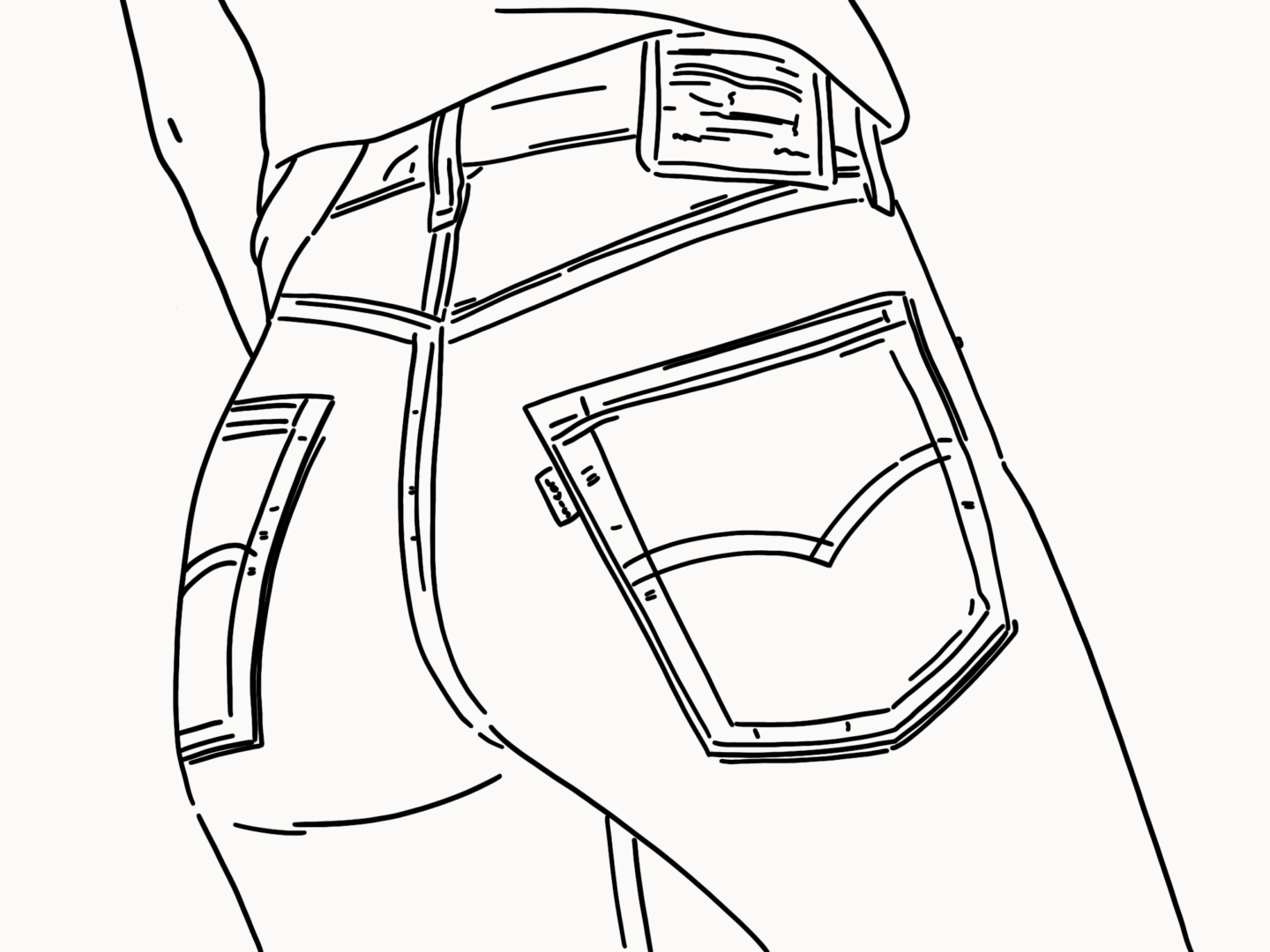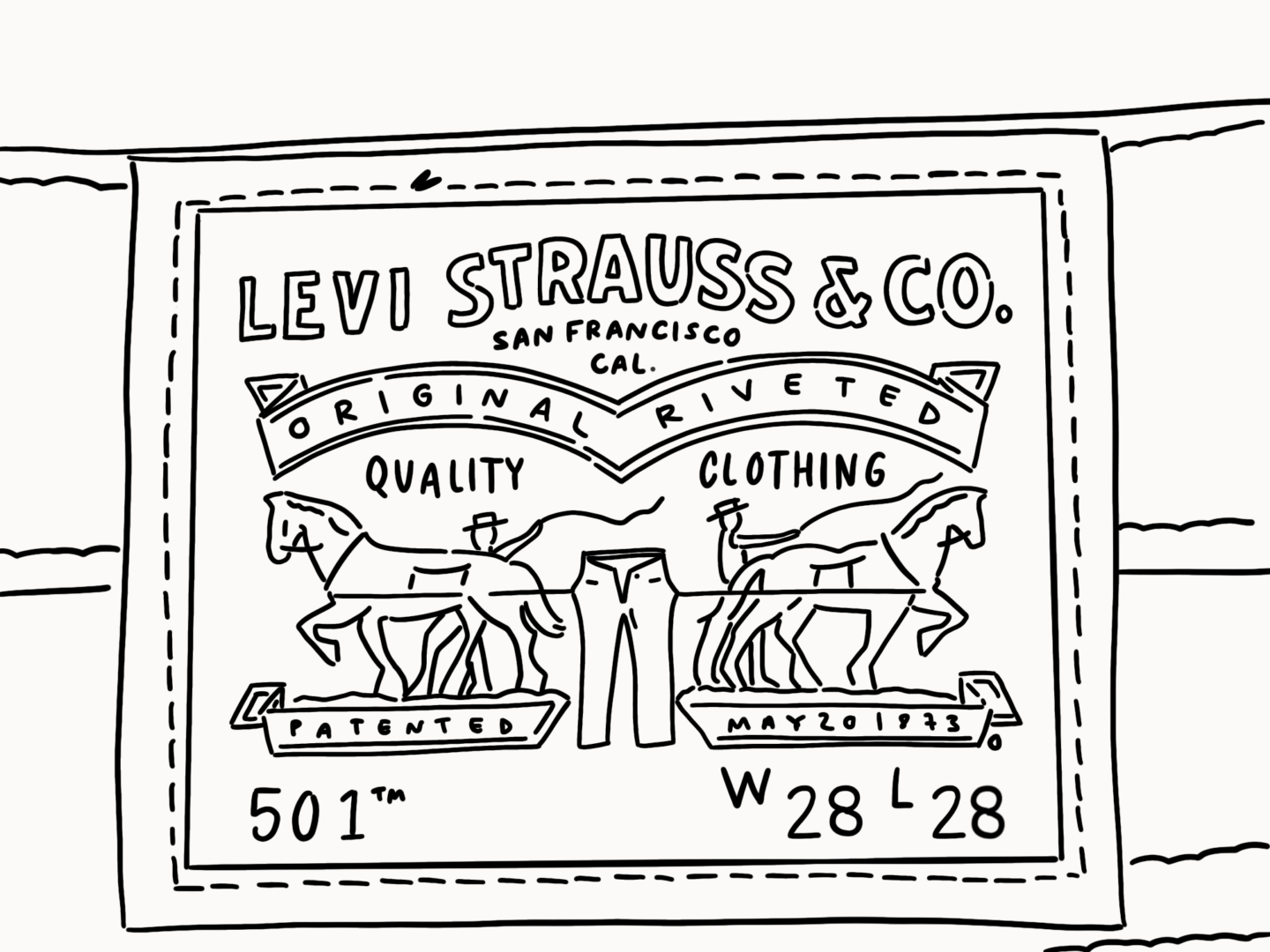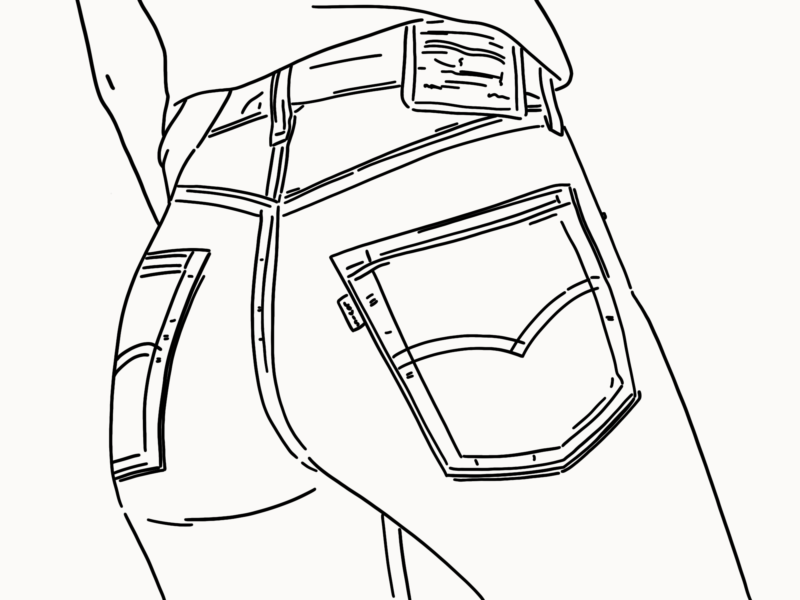Last year, towards the start of this design stories series I delved back into the history of the white t-shirt. So, I thought it was high time that I turned to fashion for a design story again and investigated the white t-shirt’s perennial partner the blue jean.
Levi’s are the name that we most commonly associate with jeans. In fact, they’re almost synonymous at this stage. So, that’s where we’re going to be focusing our attention today.
A lot of people think that Levi (previously Loeb) Strauss invented denim, but that isn’t quite the case. Similar fabrics had been used by sailors across Europe, particularly in Portugal, since the 16th century. Denim was actually accidentally discovered in the 18th century in Nimes, France when people attempted to replicate a sturdy Italian fabric which was known as serge. The fabric created by the people of Nimes was made of a mix of cotton and wool. It was first known as “serge de Nimes” but as it became popular its name shortened to be “denim” as we know it now.

So if they didn’t develop denim, what did they do? Well, I’m glad you asked. The story begins, according to Time magazine’s wonderfully written piece in 1950 like so:
At what was the height of the Gold Rush miners were wearing dungarees, which as our friendly miner tells us didn’t “wear a worth hoot up in the diggins”. In particular, their pockets ripped out and seams tended to pop open under the stress of being worn for vigorous physical activity. So when Levi Strauss, a well respected wholesale dry goods store owner, came across a customer named Jacob Davis who had a proposal for how they could make the strongest overalls in the land he was all ears.
Davis had been a tailor in Reno. While working he started “placing copper rivets at “points of strain,” including pocket corners and the seam below the button fly, thereby creating a garment that could withstand the work life of miners and other hard laborers of the time”. He knew he was onto a winning idea. But he didn’t have any money to file a patent or any resources to mass produce his reinforced overalls.
That’s where Levi Strauss came in, and the pair filed a patent on May 20, 1873. As soon as they had that patent, they started manufacturing their waist overalls (aka jeans). Made by seamstresses in their own homes at first their first jeans came in brown and blue, and “featured a single back pocket with the soon-to-be-famous arcuate design, a back cinch and, of course, rivets at points of strain on pockets and the crotch.”
As Davis had predicted their hard wearing waist overalls were an instant success.
By 1880 the pair had opened their own factory to produce their XX waist overalls. The XX in their name didn’t denote size but instead demarcated their extra-strong design, which was the precursor to the 501s we know and love now.

In 1886, the pair’s patent was nearing its end and Strauss knew there would be an influx of other jeans makers entering the market. So he decided they needed a way to mark out their product amongst a sea of competitors. That’s when the famous Levi’s patch was born. Strauss and Davis’s brand was all about strength so, Strauss had a patch emblazoned with two horses pulling at an unbreakable pair of jeans sewn onto each pair of jeans they made. The patch became so recognisable that they were known as The Two Horse Brand until 1928 when they officially became Levi’s.
As with the story of the white t-shirt the popularity of jeans owe a lot of their success to the rock n roll stars of the music industry of the 1950s and the ever charismatic figure of Marlon Brando. Once jeans moved from a workwear staple to a statement of youth and rebellion their fate completely changed. By the time that stonewashing technology revolutionised the manufacture of denim in the 1970s, jeans were a staple in almost every wardrobe.
Jeans have endured as an icon of design, even though their XX standard of strength has waned over the years the strength of their branding hasn’t. I, for one, do actually live in Levi’s.


